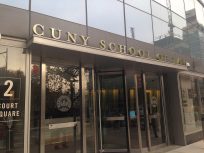
“The hierarchy of poverty has deadly consequences.”
Born during Bangladesh’s war for independence, our home was bombed and I survived as the family tale goes cocooned by the rubbles of concrete and iron bars. Soon after, in December 1971, Bangladesh gained its independence. Intertwined with the genesis of Bangladesh, I grew up on a steady narrative of survival stories from political unrest, floods, and garment factory tragedies. Bangladeshis would repeat this cycle of mourning, outrage, and reminiscing on our liberation war of 1971, and then look promisingly forward for a better future. So, when the building in Savar collapsed crushing and killing over 200 people (and counting) and injuring thousands more, I knew that Bangladeshis would emerge from this tragedy strong. Despite overwhelming poverty, Bangladeshi people are among the happiest on the planet, or say they say, ahead of even the United States.
But, this stubborn, romantic and paternalistic narrative of the resiliency of the poor hinders serious possibilities for change. It serves to excuse a deep-rooted, depraved indifference in our global economy to the life of poor workers in Bangladesh. Instead, it favors maximizing profit for companies that (sub)contract local garment factories for cheap labor. No civilized nation including America or Bangladesh should allow this callous calculus to continue of profit over people. It is of no surprise that Walmart is one of the companies linked to the garment factories in the collapsed building. Workers in the United States are agitating for better working conditions in the retail and fast food industry including Walmart while workers in Bangladesh are being crushed to death literally and figuratively by inhumane labor conditions. The hierarchy of poverty has deadly consequences.
How can we change this narrative of survival from repeated tragedies where garment factories ablaze and collapse and construct one rooted in solidarity. New York City has witnessed a tremendous growth in the Bangladeshi and South Asian immigrant communities. Those communities have played an active role in the labor movement here in the United States on behalf of immigrant workers in the taxi and domestic work industries to name a few. The growth and institutionalization of community-based organizations serving South Asian immigrants here in the United States provide a unique opportunity for workers in the South Asian diaspora to provide support and forge alliances with workers in Bangladesh and South Asia.
Broadly, in the United States, there has been a renaissance of labor organizing and a reinvigorated demand for living wages and safe working conditions for all workers. We have seen this resurgence in Chicago and Wisconsin. The growth of social justice organizations in the South Asian immigrant community coupled with the renewed labor movement provides the grassroots infrastructure and capacity for immigrant workers in the United States to show clear and unequivocal solidarity with workers in Bangladesh and globally. Capacity building and strengthening those organizations’ infrastructure will be the foundation necessary to build up any grassroots led, transnational solidarity movement.
Community based organizations like DRUM – Desis Rising Up and Moving – is beginning those efforts through the formation of their Global South Asian Migrant Workers Alliance. http://www.drumnyc.org/global-justice-program/ International Labor Rights Forum’s partnership with the Bangladesh Center for Worker Solidarity is another example of solidarity building efforts through their worker tour and action. http://laborrights.org/events/end-gap-walmart-death-trap-factories-safe-workplaces-for-all There are room for more projects and people to think though how we may embark on this work carefully and thoughtfully.
Efforts at transnational labor organizing from the grassroots up (not grasstop down) will finally break this narrative of survival from poverty that simply forces workers to bear the deadly burdens of global economic inequity. Building up a worker-to-worker lead grassroots labor movement will be challenging given the enormous regulation and surveillance by the state of workers. This regulation through immigration laws for example contrasts with the lack of regulation or oversight over corporate actions. In this regard, worker leaders and allies need to think creatively about leveraging their access to decision-makers and spaces to ensure that the voices of those marginalized are brought to the center. Academics, artists and other allies can play an active role in the spirit of Gramsci’s organic intellectual to build a culture and ideology that promotes solidarity and empowerment of workers. Technology like skype and web conferences allows for worker-to-worker contact and planning in ways that was not possible before. I am sure there are more creative ideas that will come out simply by reorienting our international human rights work to a grassroots, worker lead framework.
Before we get to the “how”, we must be committed to building a grassroots led global labor rights movement. Building transnational worker solidarity may provide hopes for a new story of solidarity that refuses to accept poverty, deplorable working conditions and devaluation of human life as business as usual.





[…] https://staging.lawatthemargins.com/crushing-greed-building-transnational-labor-solidarity/ […]